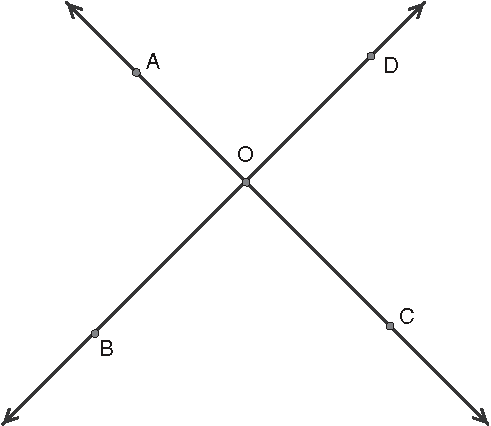Geometry: A Solid Foundation: Definitions, Postulates, and Theorems
A Solid Foundation: Definitions, Postulates, and Theorems
When you construct a proof, go step-by-step from your given information to (hopefully) your conclusion, or what you want to prove, using only your definitions, postulates, and theorems. The more theorems you have proven, the more sophisticated (and shorter) your proofs will become. You will build on what you've already established, and your house of cards will begin to stretch to the sky. As long as you start with a firm foundation of definitions and postulates, your structure will weather any storm. Guaranteed. It will be obvious if substandard parts are used, and any shoddy workmanship will be apparent immediately.
Write your proofs using the two-column technique. This technique has been used for centuries (or at least since I first learned geometry). It will help you organize your proofs and make them easy to read and understand. In the first column you write what you are claiming, step-by-step. In the second column you write why you can make that claim. Sometimes the justification for your claim is that you were given the information. In that case, all you need to include in your justification is “given.” In other cases, your justification will be a definition, a postulate, or a theorem. If your postulate or theorem was given a name (like the Angle Addition Postulate), all you have to write down is the name. If your theorem or postulate wasn't special enough to warrant a name, you can either write down its number (they will all have numbers), or you can summarize the theorem. As for definitions, it's enough just to give the term whose definition you are using.
Let's prove a theorem using this two-column approach.
Theorem 8.1: If ↔AC intersects ↔BD at O (as in Figure 8.1), then ∠AOB ∼= ∠DOC.
Proof: Here is your first look at a two-column proof in action.
| Statements | Reasons | |
|---|---|---|
| 1. | ↔AC intersects ↔BD at O | Given |
| 2. | ∠AOC and ∠DOB are straight angels, and m∠AOC = 180º, m∠= 180º | Definition of straight angle |
| 3. | m∠AOC = m∠DOB | Substitution (step 2) |
| 4. | m∠DOA + m∠AOB = m∠DOB and m∠DOA + m∠DOC = m∠AOC | Angle Addition Postulate |
| 5. | m∠DOA + m∠AOB = m∠DOA + m∠DOC | Substitution (steps 3 and 4) |
| 6. | m∠AOB = m∠DOC | Subtraction property of equality |
| 7. | ∠AOB ∼= ∠DOC | Definition of congruence |

Figure 8.1↔AC intersects ↔BD at O.
Notice that in my proof I began with the given information. I used only one line to discuss the size of ∠AOC and ∠DOB, because my reason for both statements was the same: the definition of a straight angle. Usually you only want to write one reason on each line. If the same reason is used to draw conclusions about two separate angles, line segments, and so on, then it's okay to put both conclusions on the same line, and list the reason only once. There's a certain amount of flexibility involved in writing a proof. As you become more familiar with formulating arguments you'll find yourself taking shortcuts with proof writing. Some shortcuts are fine, others are forbidden. I'll point out the shortcuts along the way, and also show you some common pitfalls to avoid.
Eureka!
Theorem 8.1 is often stated as “When two lines intersect, the vertical angles formed are congruent.”

Excerpted from The Complete Idiot's Guide to Geometry © 2004 by Denise Szecsei, Ph.D.. All rights reserved including the right of reproduction in whole or in part in any form. Used by arrangement with Alpha Books, a member of Penguin Group (USA) Inc.
To order this book direct from the publisher, visit the Penguin USA website or call 1-800-253-6476. You can also purchase this book at Amazon.com and Barnes & Noble.
